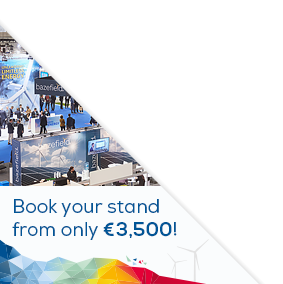Posters
Siblings:
ProceedingsProgrammeProceedingsSpeakersPostersContent PartnersElectrification StageMarkets TheatreR&I ActivitiesStudent DayProgramme Committee & abstracts reviewersPresenters dashboardCome meet the poster presenters to ask them questions and discuss their work
We would like to invite you to come and see the posters at our upcoming conference. The posters will showcase a diverse range of research topics and provide an opportunity for delegates to engage with the authors and learn more about their work. Whether you are a seasoned researcher or simply curious about the latest developments in your field, we believe that the posters will offer something of interest to everyone. So please, join us at the conference and take advantage of this opportunity to learn and engage with your peers in the academic community. We look forward to seeing you there!
PO088: Reactive power compensation in offshore wind farms with 132 kV inter arrays
Truls Drange, Electrical Engineer, Deep Wind Offshore AS
Abstract
Studies in the High Voltage Array Systems (Hi-VAS) project led by the Carbon Trust suggests that 132 kV inter arrays will be the future norm in large scale offshore wind farms (OWF). Cable suppliers are developing the next generation of inter array cables, estimated to be market ready from 2026 and onwards. Increasing the inter array voltage to 132 kV will result in higher levels of reactive power generation in the OWFs, resulting in new requirements for reactive power compensation. This effect will be more pronounced for direct to shore OWFs, with longer inter array cables than wind farms with offshore substations. Utsira North is a 1500 MW floating OWF development zone in Norway, which most likely will be subdivided into three 500 MW zones. The island of Utsira is 15 km from the field, resulting in a possibility to have an onshore substation on Utsira rather than a floating substation on the field. A 132 kV inter array grid will result in large cost savings when compared to a traditional 66 kV inter array, as fewer cables to shore are required. Cost analysis show a likely grid connection cost saving in the range of 20-25 %, which is in line with earlier published results from the Carbon Trust. If a 132 kV direct to shore solution should be applied, the large reactive power generation from the 132 kV cables must be considered. This study shows that a cost-effective design using only static shunt reactors and mechanically switched shunt reactors and capacitors can satisfy all technical requirements. This includes capacitive breaking currents for circuit breakers and grid code requirements from the Norwegian transmission system operator (TSO), Statnett.







